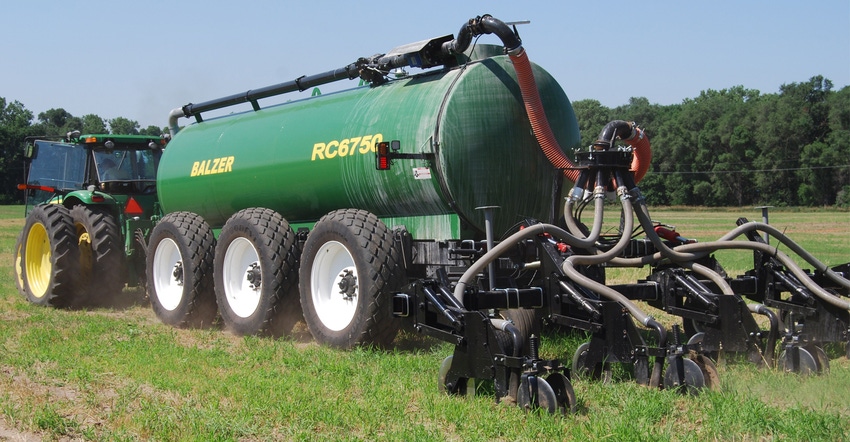September 8, 2017

Traditionally, farmers and ranchers have largely thought of manure as waste — something to get rid of. However, research from a number of universities, including the University of Nebraska-Lincoln, as well as producer experience in Nebraska, has shown that manure can be a valuable resource — not only as a source of nutrients like nitrogen and phosphorus, but also as a contributor to soil health.
As Rick Koelsch, livestock environmental engineer at the University of Nebraska-Lincoln, notes, "The chemical side has always been understood. What we've not always been aware of is the changes in the physical characteristics of soil."
Koelsch notes one of the environmental concerns surrounding manure applications has been the risk of nutrient runoff. However, he points out, there are actually environmental benefits surrounding manure applications. Research conducted by Charles Wortmann and Charles Shapiro, professors in UNL's Department of Agronomy and Horticulture in 2007 in northeast Nebraska demonstrated aggregate stability increased with manure and compost applications. Manure and compost application saw an increase of over 200% in water-stable large macro-aggregates within 15 days after application. These large macro-aggregates were 200% higher in Bray-P1 levels than the rest of the soil sample – and much higher in the large macro-aggregates of soil where compost and manure were not applied. The macro-aggregation was greater in soils where compost was applied compared to raw feedlot manure and swine slurry. With the increased macro-aggregation and Bray-P1 levels in the soil, these soils likely saw less phosphorus runoff.
Building microbial habitat
Rhae Drijber, UNL agronomy professor, views soil as a habitat. "If you can apply manure, particularly solid manure, it can increase the formation of stable aggregates adding particulate matter to the soil, which stimulates creating new habitat for microbes to explore, colonize and persist," she says. "You can build up microbial biomass as a whole, by providing stable areas for them to reside."
That is, manure contains soil organic matter, and when applied on the land, it helps create an environment for increased biological activity. This biological activity produces polysaccharides — the "glue" that produces water-stable aggregates in the soil.
How does an increased microbial community benefit soil physical characteristics? A big component is improved soil moisture infiltration. "It means less runoff, less erosion, and it probably provides more water-holding capacity in the soil," says Koelsch.
"When you start changing your structure, you start creating a more favorable habitat not only for microbes to exist, but also to perform their function," adds Drijber. "You're increasing aeration, oxygen in the soil, you're creating nutrients for those microbes to recycle and make more available to plants, and providing phytochemicals, hormones and other things the plants might use the following season."
This also means more food for fauna like earthworms and arthropods, because there's more organic matter to break down and move around.
"Arthropods move soil particles around, repackaging materials into fecal materials. Earthworms consume vegetation from the surface of the soil and drag into a channel and form new organic matter as it processes it through feces," says Drijber. Earthworms consume some of the microfauna, such as bacteria and fungi, she says. “They're releasing nutrients tied up in bacteria and fungi, so they become more available for plant growth. They also improve macro-porosity, air filtration, as they burrow through the soil."
No 2 piles the same
Drijber notes when it comes to manure's soil health benefits, there's a difference between solid and liquid. "When you add liquid manure, you're adding soluble carbon and nutrients, so you're going to get stimulation in the microbial community that has access to those nutrients. You can get polysaccharides, but you're not adding as much raw material as when you're adding solid material or particulate organic matter," she says. "That's not saying liquid manure isn't beneficial, because it's a good nutrient source. But it's more of a short-term benefit, especially if it's applied as fertigation during the growing season."
There's a big difference in manure from different species, and manure that's stored under different conditions. That's why it's important to test to know what's available in terms of nutrients. "We alter manure a lot between the time it's left by the animal and the time it's applied on the soil," adds Koelsch. "In feedlots, we mix soil in; we get rained on. You really need a manure sample that approximates the product you're putting on, and try to get that sample that is representative at the time."
Learn more by contacting Koelsch at [email protected] or Drijber at [email protected].
You May Also Like




